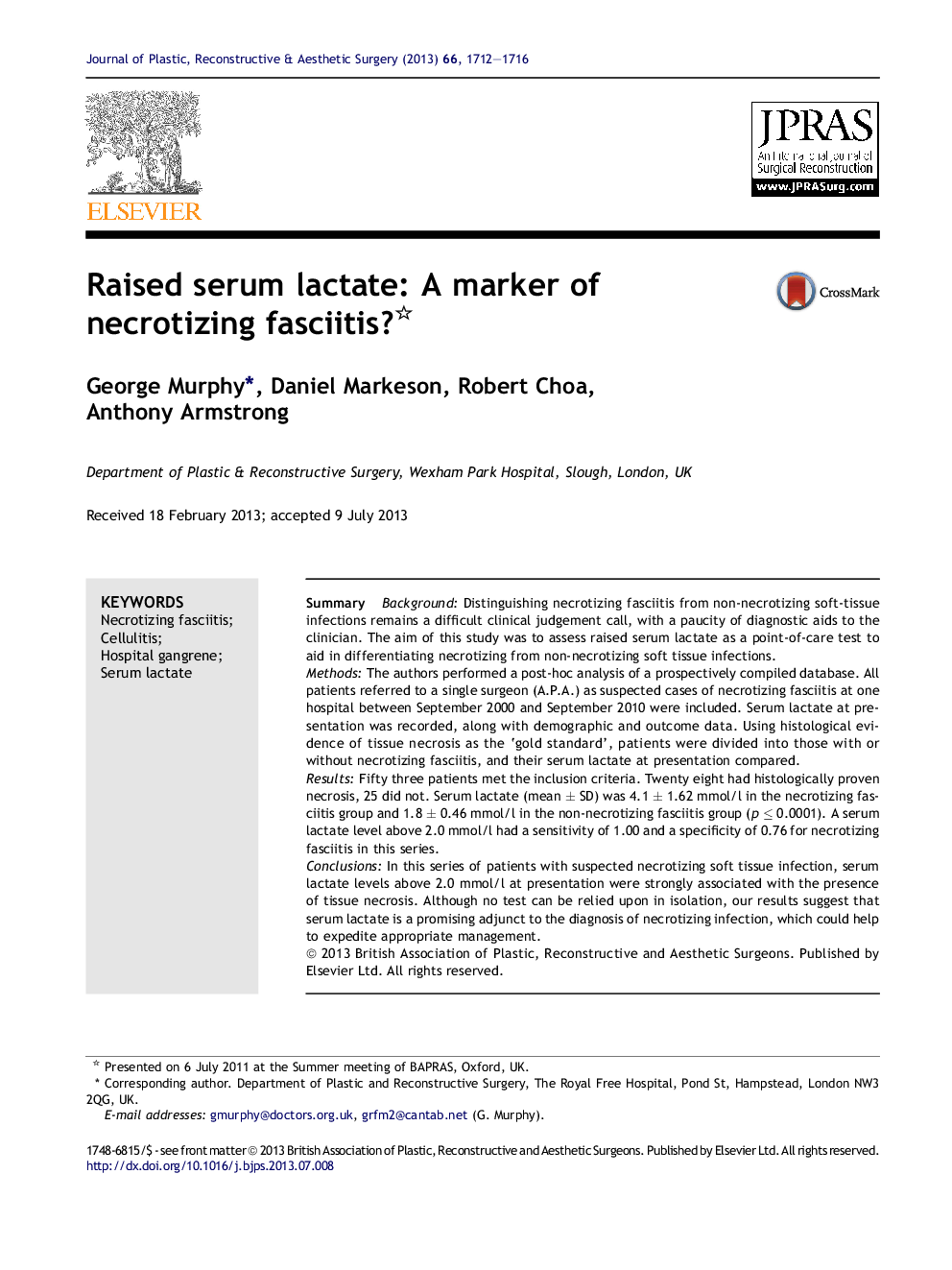| Article ID | Journal | Published Year | Pages | File Type |
|---|---|---|---|---|
| 4118188 | Journal of Plastic, Reconstructive & Aesthetic Surgery | 2013 | 5 Pages |
SummaryBackgroundDistinguishing necrotizing fasciitis from non-necrotizing soft-tissue infections remains a difficult clinical judgement call, with a paucity of diagnostic aids to the clinician. The aim of this study was to assess raised serum lactate as a point-of-care test to aid in differentiating necrotizing from non-necrotizing soft tissue infections.MethodsThe authors performed a post-hoc analysis of a prospectively compiled database. All patients referred to a single surgeon (A.P.A.) as suspected cases of necrotizing fasciitis at one hospital between September 2000 and September 2010 were included. Serum lactate at presentation was recorded, along with demographic and outcome data. Using histological evidence of tissue necrosis as the ‘gold standard’, patients were divided into those with or without necrotizing fasciitis, and their serum lactate at presentation compared.ResultsFifty three patients met the inclusion criteria. Twenty eight had histologically proven necrosis, 25 did not. Serum lactate (mean ± SD) was 4.1 ± 1.62 mmol/l in the necrotizing fasciitis group and 1.8 ± 0.46 mmol/l in the non-necrotizing fasciitis group (p ≤ 0.0001). A serum lactate level above 2.0 mmol/l had a sensitivity of 1.00 and a specificity of 0.76 for necrotizing fasciitis in this series.ConclusionsIn this series of patients with suspected necrotizing soft tissue infection, serum lactate levels above 2.0 mmol/l at presentation were strongly associated with the presence of tissue necrosis. Although no test can be relied upon in isolation, our results suggest that serum lactate is a promising adjunct to the diagnosis of necrotizing infection, which could help to expedite appropriate management.
